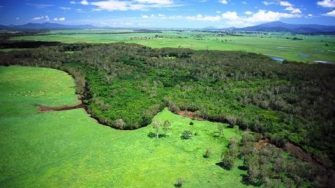
Governments and NGOs worldwide need credible methods to assess risks to biodiversity that are consistent, transparent and theoretically sound, to support conservation policy and management.
Understanding risks to biodiversity is a prerequisite for effective action to slow rates of loss, secure ecosystem services and manage ecosystems. The International Union for Conservation of Nature (IUCN) Red List of Threatened Species is an effective, credible and universally adopted tool for assessing risks to species. However, until now, there has been no globally accepted method for assessing risks to biodiversity at the ecosystem level.
On 20 May 2014, the International Union for Conservation of Nature (IUCN) endorsed the newly developed IUCN Red List of Ecosystems criteria, providing a new international framework to objectively assess the status of the Earth's ecosystems. CES scientists led by Prof. David Keith are collaborating with scientists and practitioners from around the world to test the listing criteria on a range of ecosystems around the world and develop novel tools to assist in their implementation. Like the Red List for Threatened Species, the Red List of Ecosystems will influence policy, assist allocation of conservation resources and contribute to slowing the loss of the world's biodiversity.
